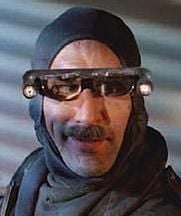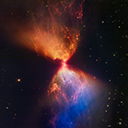- cross-posted to:
- technology@lemmy.ml
- cross-posted to:
- technology@lemmy.ml
After 20 years, PNG is back with renewed vigor! A new PNG spec was just released.
Great news! PNG has always been my image format of choice due to its relatively good compression and support for transparency.
deleted by creator
PNG has terrible compression
It’s fine if you’re using it for what it’s intended for, which is images with flat color or an ordered dither.
It’s not great for compressing photographs, but then, that wasn’t what it was aimed at.
Similarly, JPEG isn’t great at storing flat-color lossless images, which is PNG’s forte.
Different tools for different jobs.
JPEG isn’t great at storing flat-color lossless images, which is PNG’s forte.
JPEG isn’t, but JPEG-XL, on the other hand, has come into existence and has great compression while being pixel-perfect lossless as compared to PNG (among a host of other improvements).
If only it got the support it deserves (thanks Google for making that harder)
Do you remember png? Well now it’s back. In pog form!
Eventually they’ll adopt the multi-page specs and finally push Adobe off the mountain.
I didn’t realize it had gone anywhere. It’s always my first choice.
WebP had been kind of moving in on its turf, based on what I’ve been seeing websites using.
I’ve never heard of webP. Looked it up. Not impressed. Sticking with png.
The main advantage of webp is that it has good lossy compression, which makes it great for websites that show tens or hundreds of images on a single page
I always used PNG where I would have used GIF. Other than that I use JPG still. I’m guessing webp is more on the JPG side of things than the GIF side?
It can do both, lossiness is toggleable.
If you’ve seen a picture on Lemmy, you’ve almost certainly seen a WebP. A fair bit of software – most egregiously from Microsoft – refuses to decode them still, but every major browser has supported WebP for years and since superior data efficiency compared to JPG/PNG means is already very widely used on the web. Bandwidth is not that cheap.
Who would want to use a format named web-pee
Web-pee is stored in the web-balls
Um, actually it’s pronounced png
Correct. Like “plunge” without the “lu”.
Imagine if god showed up one day and said: “It’s actually Jod” then left
No that’s wrong and the creator saying it’s right is also wrong
What’s next?
I know you all immediately wondered, better compression?. We’re already working on that. And parallel encoding/decoding, too! Just like this update, we want to make sure we do it right.
We expect the next PNG update (Fourth Edition) to be short. It will improve HDR & Standard Dynamic Range (SDR) interoperability. While we work on that, we’ll be researching compression updates for PNG Fifth Edition.
One thing I’d like to see from image formats and libraries is better support for very high resolution images. Like, images where you’re zooming into and out of a very large, high-resolution image and probably only looking at a small part of the image at any given point.
I was playing around with some high resolution images a bit back, and I was quite surprised to find how poor the situation is. Try viewing a very high resolution PNG in your favorite image-viewing program, and it’ll probably choke.
-
At least on Linux, it looks like the standard native image viewers don’t do a great job here, and as best I can tell, the norm is to use web-based viewers. These deal with poor image format support support for high resolutions by generating versions of the image at multiple pre-scaled levels and then slicing the image into tiles, saving each tile as a separate image, so that a web browser just pulls down a handful of appropriate tiles from a web server. Viewers and library APIs need to be able to work with the image without having to decode the whole image.
glivused to do very smooth GPU-accelerated panning and zooming — I’d like to be able to do the same for very high-resolution images, decoding and loading visible data into video memory as required. -
The only image format I could find that seemed to do reasonably well was pyramidal TIFF.
I would guess that better parallel encoding and decoding support is likely associated with solving this, since limiting the portion of the image that one needs to decode is probably necessary both for parallel decoding and for efficient high-resolution processing.
There is a reason why TIFF is one of the most popular formats for raster geographic datasets :)
deleted by creator
Yeah, I have a couple over 800MB PNGs that I can only get Gimp to open properly. I need to look into pyramidal TIFFs.
deleted by creator
Again, that would be TIFF. TIFF images can be encoded either with each line compressed separately or with rectangular tiles compressed separately, and separately compressed blocks can be read and decompressed in parallel. I have some >100GiB TIFFs containing elevation maps for entire countries, and my very old laptop can happily zoom and pan around in them with virtually no delay.
JPEG2000 can do exactly what you want for decades.
-
HDR PNG is huge
Did it go away? I still use it as my go to format for small lossless images.
Yes. But does Lemmy support .png?

Ahh.
May webp die a horrible death in its wake!
WebP was the first widely supported format to support lossy transparency. It’s worth it for that alone.
Lossless WebP is still gets way better compression than PNG though, this doesn’t change that. Although they mention they’re looking to improve it in the next version, so we’ll see then.
why?
Because most of my software doesn’t have support for webp, including but not limited to my Mac, phone, and messaging apps. Until everything supports it, I have to keep converting it to use it, so I just don’t bother saving anything as webp. In fact, I have a firefox extension that lets me save webp as other image formats.
It may be good to use for the web, but it’s not yet good for me.
I personally love WebP and other innovative formats, I don’t wish them dead, because better compression saves time and bandwidth.
However, for saving stuff on my computer, like you, I would tend to go for more supported formats.
I’m mostly just sad that it takes so long for new formats to be widely supported.
You have no choice there. Outside of web pages it’s undersupported. Is it the fault of the file format or of software that doesn’t support the format?
APNG wasn’t officially part of the spec?!
Crazy huh but APNG was so well done it just showed the first frame like a normal PNG in any non supported browser which was amazing. I used to have an avatar which has the TF2 engineer as the first frame and the spy as the second.
I’m glad it is now. I remember a decade or so ago, I wrote an APNG decoder, so I was deep in the world of APNG.
And I remember reading various things that made me think MNG was the ‘more official’ flavour of “animated PNG”, and it was absurd to me, because APNG seemed like a much more approachable spec. I’m glad the winds have turned…
I remember MNG and never understood why APNG wasn’t officially recognized. I didn’t know it was widely supported already. Why do people still create and use GIF in the internet, if there is a superior format?
At least at one point, GIF89a (animated GIF) support was universal among browsers, whereas animated PNG support was patchy. Could have changed.
I’ve also seen “GIF” files served up online that are actually, internally, animated PNG files, so some may actually be animated PNGs. No idea why people do that.
Possibly the final version. Quite Okay Imaging (QOI) achieved similar compression with none of the complexity. Lossy + difference = lossless formats are surely the better option where performance is not crucial. Even the fact they fffucking finally made APNG official is decades late to replace GIF, since several image formats are now literally video formats.
The future is webp. And telling software patents to burn in hell.
The future is
webpJPEG XL…And telling software patents to burn in hell.
Never saw even one piece of your “future” in the wild…
That’s because Google removed the support from chrome after only a few months, and Mozilla never added it to Firefox. And although there’s apparently an extension for both, (lossy) image formats need out of the box browser support to have any chance for any kind adoption.
Happily using it for presentation slides.
Try this link on an iPhone: https://jpegxl.info/resources/jpeg-xl-test-page.html
As cool and impressive as Qoi is, as long as I can’t just send it to someone it’s sadly not a replacement for PNG.
Yeah, adoption’s not a feature you can design.
The general idea may show up in any extensible format. Like a PNG encoder that only does Sub filter can encounter each pixel once.
… wait, PNG filtering is byte-level? It doesn’t change with bit depth? Christ.
Good. Kill webp and its incompatible ass.
Took me a second to realise you’re not talking about Papua New Guinea.
Same! I saw the title and thought, “wtf happened to PNG?!?!”
On the “better compression” front, I’d also add that I doubt that either PNG or WebP represent the pinnacle of image compression. IIRC from some years back, the best known general-purpose lossless compressors are neural-net based, and not fast.
kagis
https://fahaihi.github.io/NNLCB/
These guys apparently ran a number of tests. They had a neural-net-based compressor named “NNCP” get their best compression ratio, beating out the also-neural-net-based PAC, which was the compressor I think I recall.
The compression time for either was far longer than for traditional non-neural-net compressors like LZMA, with NNCP taking about 12 times as long as PAC and PAC taking about 127 times as long as LZMA.

















